Header-bidding is an AdTech solution for publishers that allows running parallel auctions, in which multiple ad exchanges and networks bid on the same impression simultaneously. Higher competition ensures increased revenues for publishers and holistic yield management. However, to use this technology, media owners have to deploy a header-bidding wrapper on their website first.
Let’s dive into the guide to header-bidding wrappers to understand how this technology works and to find out what novelties in this area might change the way we bid in 2019.

What is a header-bidding wrapper?
Header “bidding container,” aka wrapper, is a line of a javascript code that is inserted into the header of the publisher's web page. Header-bidding auction is historically designed to fix limitations of the “waterfall” arrangement and suggest a new model for the programmatic: offering the same ad impression for multiple bidders at the same time.
Header wrapper considerably simplifies the way publishers manage their programmatic contacts. Basically, these tags allow publishers to add or remove demand sources without having to modify the website code. One container tag placed in the header is far more operationally efficient than dozens of individual tags for every partner. Wrapper tag technology intelligently organizes buyers and provides rules for RTB auctions that are profitable for the media owner.
Without header-bidding wrappers, managing partners was almost impossible. By 2018, 75% of app publishers were working with 5 different header-bidding partners. Mobile header-bidding solutions are managed through software development kits (SDKs), which are also called mediation platforms.

Kinds of wrappers and header-bidding tag
There are open-source and commercial header-bidding wrappers. Open-source wrapper tags are free, fully customizable, and quite flexible. Thousands of independent developers and AdTech community members contribute to the code, making it even more efficient. Prebid.js, PubFood.js are the most common open source solutions. These open-source wrappers are plug-and-play.
Virtually every vendor company has its own proprietary wrapper tag header-bidding solution designed specifically for its clients. The problem with commercial solutions is that the wrapper code provider may manipulate header-bidding demand, analytics, and service partners in case it’s not common, industry-proven technology.
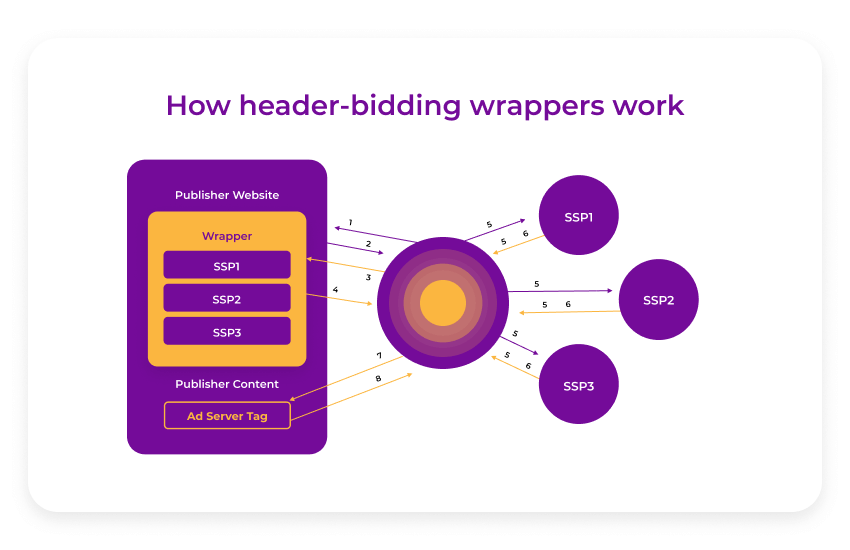
What are the main features of wrapper tags?
- Most of the header wrapper tags are free and open-source. They are ideally suited for technically adept publishers and media owners who want a basic framework that is flexible in customization. Other provider-specific wrapper tags normally come with a fee, but they provide technical support, advanced analytics, and other additional services.
- The majority of header-bidding wrapper tags are browser-side bidding containers. However, with client-side integration, publishers can be limited by performance issues such as slower auctions, decreased time of page loads, latency problems, and poor user experience.
- Alternatively, there are server-side containers. In this scenario, auctions happen on the provider’s server, removing the strains from the browser. Server-side solutions have dramatically proven to reduce technical complexities by reinforcing OpenRTB standards. This happens because, in server-side auctions, demand sources respond not only with the bid price but also with an ad creative. Ad servers can successfully analyze advertising content and choose the best-quality ads. Such a security check prevents bad ads from appearing on the publisher’s website.
- The main feature to ask for is asynchronous container mode and a single timeout. This technology ensures that all programmatic partners have their bid requests triggered at the same time.
- Choose wrapper containers that offer multiple options on formats such as display, video, and native ads, as well as various user channels like mobile or desktop.

Header-bidding wrapper solutions: market trends
273,29 billion dollars in global ad spending invested in digital advertising last year. More than $427,26 billion is supposed to be spent by 2022. This number seems stunning, but the shares of Google and Facebook in this number are really large, which means the publishers will have to get by with the remaining billions. header-bidding wrappers may help to even out the situation. As eMarketer reports, more than half of programmatic websites were using unified auctions in 2018, and the amount is expected to grow.
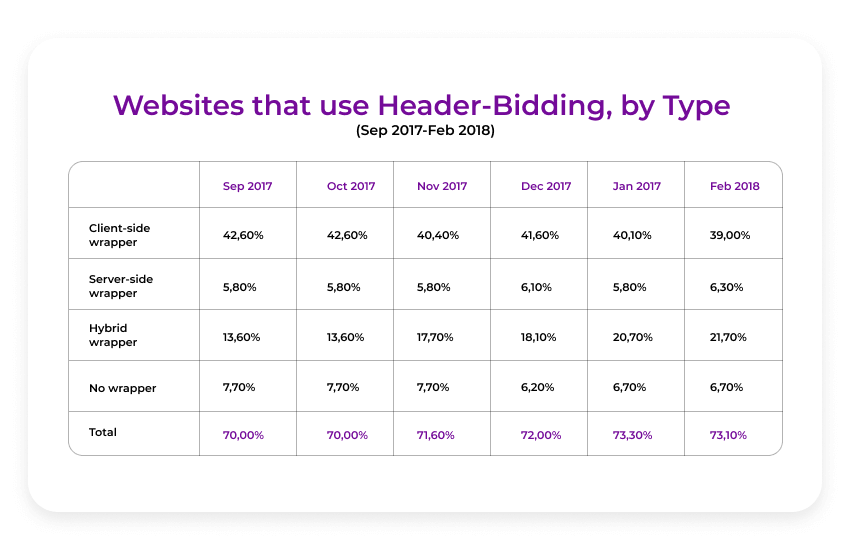
The most popular header-bidding solutions reportedly were client-side implemented wrappers (39% ), and hybrid wrappers (21,1%) followed by server-side decisions (6,3%), which are only gaining momentum. When it comes to the business verticals that adopted header-bidding solutions, it appears that news/content, communities, utilities, and e-commerce embraced the header-bidding technology the most.
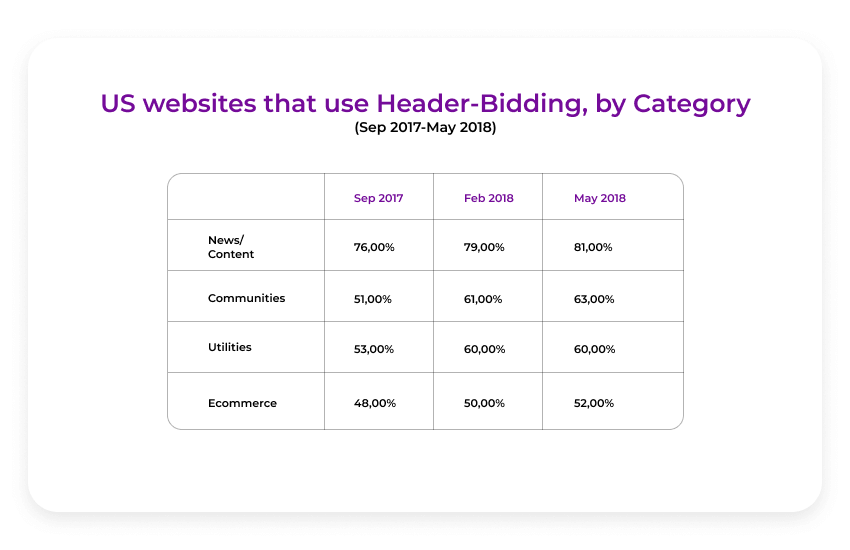
Currently, many supply parties are seeking to optimize their own inventory selling process by configuring demand paths individually. Various header-bidding wrappers also brought nuances into the auctions that buyers need to understand in order to identify how they pay.
In 2019, the first-price auction in header bidding will be used by default. Also, the market players can expect such practices as bid-shading and the prevalence of mobile over desktop.
One more bonus of header bidding is an opportunity to serve video and native ads. Today, such formats are seen as the most valuable assets on the publisher's website, and the demand for them grows. As a result, mobile developers serving such types of ads have the opportunity to sell their inventory at the maximum price.
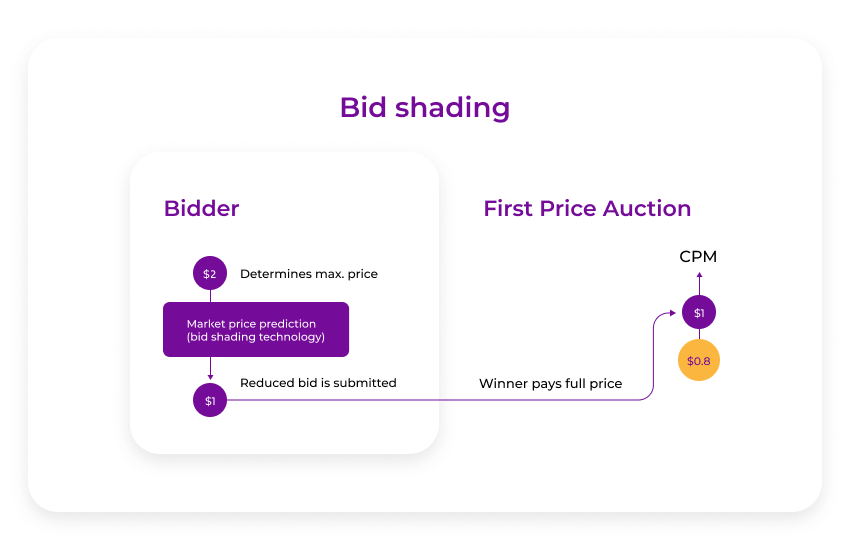
What are the pros and cons
Like any other programmatic technology, wrapper tag solution has both advantages and disadvantages. Let us consider all of them so you know what potential benefits it might bring to you and what challenges you may face when implementing:
Wrapper Advantages
- Header-bidding wrappers allow publishers to configure universal timeout settings. This helps to reduce latency, enforce a hard deadline for the auction, and set the limit on how long the browser waits for all bidders to respond before they are passed over;
- Improves page load speed, therefore enhancing user experience;
- Increases server response time. The ad server will deliver ad creatives to a user’s browser in the shortest time possible with minimized complications;
- Implemented easily. Container tags are easily added to the header of the page;
- Ensures better ad and page performance. Less script on the page increases web page efficiency;
- Asynchronous rendering mode allows loading ads in sequence so they don’t block other elements and the rest of the publisher’s web page content.
- Consolidated line item settings in the ad server;
- Easily add, test, swap, and remove demand partners. Wrapper tags make trading relationships simple;
- Centralized data from reporting and analytics in one place allows publishers to see what works and what does not. Such insights are useful in the optimization of the ad space and further planning.
Wrapper Challenges
- Requires skilled resources on the developer’s side for a successful operational setup. To use a wrapper tag technology, you have to understand clearly how to configure it, what features it supports, and how to troubleshoot potential issues;
- Some wrappers come without a user interface. However, custom solutions are available;
- If not configured correctly, the wrapper tag can seriously affect the page load, which will result in a revenue loss;
- The same happens with direct campaigns. If wrapper containers are not running properly, passbacks are possible. Poorly integrated demand partners can easily ruin the setup for other demand sources and even disrupt the whole campaign.
How it works with your ad campaign
The user enters a publisher’s web page, and the content starts to load along with the header-bidding containers. What happens next is AdTech magic. Wrapper’s code makes asynchronous calls to all demand partners at the same time. The ad impression is therefore offered to all integrated demand sources, and the auction starts. All buying partners respond to the publisher within a limited timeframe. The wrapper tag collects bidding responses and immediately sends query string parameters to the ad server. The ad server analyzes bid requests and chooses the winning bid. Finally, the ad server delivers the ad to the advertising slot. Done!
SmartyAds and header-bidding wrapper technology
With SmartyAds’ powerful wrapper solution, publishers can handle multiple header-wrapper
tags in one place. Our wrapper tags include the asynchronous container that sends bid requests to all demand partners simultaneously and ensures the auction happens within the limited time set by the publisher. We also provide universal timeout settings and partner-specific adapters.
SmartyAds offers a comprehensive stack of tools and products for successful header-bidding integrations. SmartyAds supply-side platform is designed to enhance the publisher’s ability to run competitive pre-bid auctions that result in increased monetization opportunities.
Start managing your partners easily with SmartyAds wrapper tags and header-bidding solutions. Contact us today!

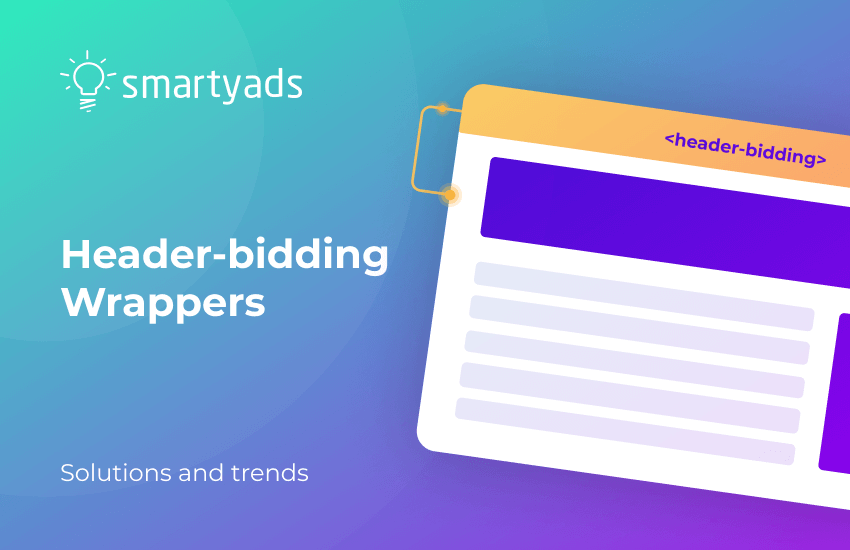

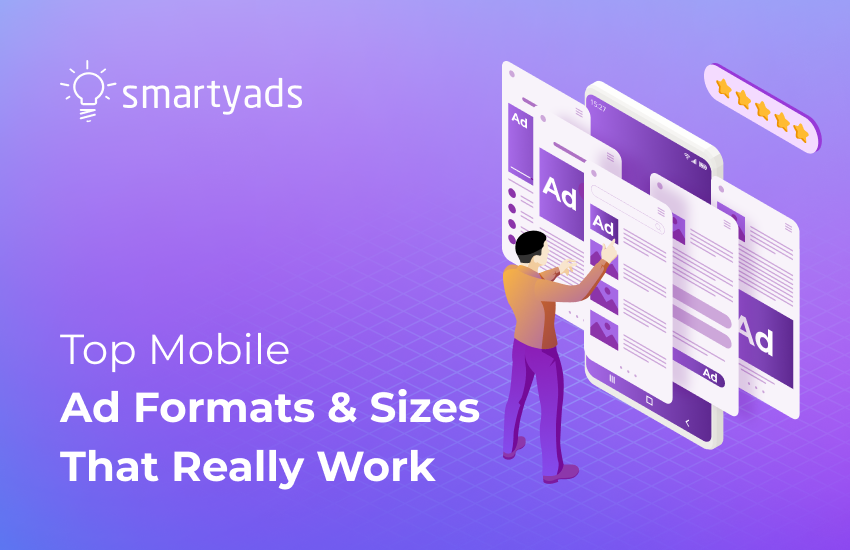
![In-App Advertising: the Complete Guide [Updated 2025]](/storage/uploads/2020/september/in-app-advertising-trends.png)
